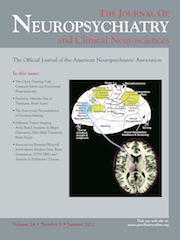Agomelatine in Depressive Disorders: Its Novel Mechanisms of Action
Abstract
Disruptions in sleep and sleep–wake cycle regulation have been identified as one of the main causes for the pathophysiology of depressive disorders. The search has been on for the identification of an ideal antidepressant that could improve both sleep disturbances and depressive symptomatology. Melatonin, the major hormone of the pineal gland, has been shown to improve sleep and is involved in the regulation of the sleep–wake cycle. Identification of high concentrations of MT1 and MT2 melatonergic receptors in the suprachiasmatic nucleus of the anterior hypothalamus, the structure concerned with regulation of circadian rhythms and sleep–wake cycles, has led to the development of melatonergic agonists with greater potency and longer durations of action. Agomelatine is one such melatonergic agonist that acts specifically on MT1/MT2 melatonergic receptors and at the same time exhibits 5-HT2C antagonism, a property that is utilized by current antidepressants that are in clinical use. Agomelatine has been shown to be effective in a number of animal models of depression. Clinical studies undertaken on patients with major depression, bipolar disorders, seasonal affective disorder, and generalized anxiety disorder have all shown that agomelatine is also very effective in ameliorating depressive symptoms and manifesting early onset of action with a good tolerability and safety profile. It improved sleep efficiency and also resynchronized the disrupted circadian rhythms. Hence, the melatonergic modulation by agomelatine is suggested as one of the mechanisms for its antidepressant effect. Agomelatine’s action on dendritic neurogenesis in animal models of depression is also identified as yet another action.



